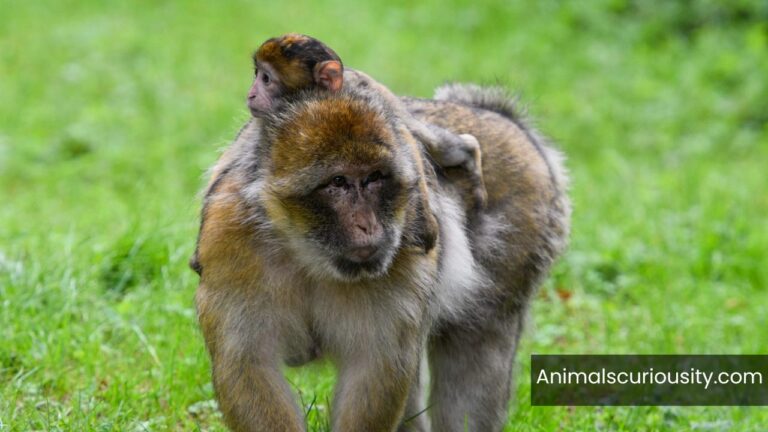Explore Top 9 Red Birds in South Carolina (With Pictures)
As dawn breaks over the lush landscapes of South Carolina, a symphony of colors unfurls in the sky, but none are quite as striking as the vivid hues of red birds that flit about. From the resplendent cardinals perched on tree branches to the elusive scarlet tanagers dancing through canopies, these feathered marvels captivate both seasoned birdwatchers and casual observers alike. The allure of red birds in South Carolina goes beyond their eye-catching plumage; it’s a glimpse into a vibrant ecosystem teeming with life.
In this article, we’ll delve into the fascinating world of these crimson avians, exploring their habitats, behaviors, and unique roles within local folklore. Whether you’re an avid birder or simply someone who enjoys nature’s beauty, join us as we uncover why these red birds are not just a pretty sight but an essential thread woven into South Carolina’s rich tapestry of wildlife. Prepare to be enchanted by stories behind each species and tips for spotting them on your next outdoor adventure!
List Of 9 Red Birds in South Carolina
Here is the list of red birds of south carolina:
- Summer Tanager
- Northern Cardinal
- Pine Grosbeak
- Purple Finch
- Painted Bunting
- Red Crossbill
- Scarlet Tanager
- Common Redpoll
- White-winged Crossbill
Summer Tanager
Scientific Name: Piranga rubra
The Summer Tanager, a vibrant red bird often seen flitting through South Carolina’s lush canopies, is a true marvel of nature. Unlike its cardinal cousins, this species boasts a strikingly uniform crimson plumage that sparks joy among those lucky enough to spot it. Found primarily in deciduous forests and suburban areas, these birds are known for their sweet, melodic songs that brighten warm summer afternoons as they dart between trees.

What sets the Summer Tanager apart is not just its dazzling appearance but also its unique diet, primarily consisting of insects and ripe fruits. Observant birdwatchers may catch sight of these feathered gems deftly catching bees mid-flight or foraging on berry-laden branches. Their migratory patterns make them harbingers of summer in South Carolina; arriving around late April and delighting us with their presence until the cooler months draw near.
Northern Cardinal
Scientific Name: Cardinalis cardinalis
The Northern Cardinal, vibrant in its crimson plumage, stands out beautifully against the lush backdrops of South Carolina’s landscapes. Males showcase striking red feathers contrasted with a sharp black mask around their beaks, while females donned a softer hue of warm brown tinged with hints of red. Their distinctive crest adds an elegant flair to their already captivating appearance, making them unmistakable as they flit between branches or perch boldly atop fence posts.
Diet-wise, Northern Cardinals are opportunistic feeders and display a diverse palate. They indulge in seeds, fruits, and insects throughout the year, often animatedly foraging on the ground for seeds or hovering amidst bushes to snack on berries. This dietary versatility has allowed them to thrive in various settings, from suburban gardens to wild woodland areas, highlighting their adaptability to changing environments.
Behavior is just as fascinating as appearance; these birds are known for their melodious songs which can often be heard echoing through forests during dawn and dusk. Highly territorial during breeding season, males will energetically defend their space while also engaging in playful interactions with mates.
Readmore: Are There Blue Cardinals birds?
Pine Grosbeak
Scientific Name: Pinicola enucleator
The Pine Grosbeak, a striking red bird found in South Carolina during the winter months, offers a delightful spectacle for birdwatchers. With its vibrant plumage and gentle demeanor, this species stands out against the often muted landscapes of the season. Unlike many of its avian relatives that tend to be elusive, the Pine Grosbeak is renowned for its relatively calm nature, allowing observers to truly appreciate its beauty up close.

These birds are not just visually appealing; their feeding habits reveal an intriguing side to their character. Preferring fruits and seeds from coniferous trees, they play a vital role in seed dispersal within their habitat. As they flit between branches with an easy grace, you might catch sight of them forming small flocks, social creatures that embody community even in the chill of winter.
Purple Finch
Scientific Name: Haemorhous purpureus
The Purple Finch, with its strikingly beautiful plumage, often captivates the hearts of birdwatchers in South Carolina. Unlike many of its songbird counterparts, the male Purple Finch is draped in a rich raspberry hue, complemented by earthy brown streaks that enhance its charm. Observing these finches amidst the vibrant azaleas and towering pines offers a delightful spectacle, particularly during spring migrations when they fill the air with melodic tunes.

What sets the Purple Finch apart is not just its physical beauty but also its adaptability to diverse habitats, from suburban gardens to forested areas. These birds are skilled foragers, known for their unique feeding behaviors as they crack open seeds with precision.
Painted Bunting
Scientific Name: Passerina ciris
The Painted Bunting is a dazzling jewel of South Carolina’s avian landscape, captivating birdwatchers and nature lovers alike. With males adorned in vibrant hues of blue, green, yellow, and red, these small songbirds transform the state’s shrublands into a canvas of color during the warmer months. Their arrival marks the start of summer for many enthusiasts who eagerly await sightings as they flit through gardens and along wooded edges.
Beyond their striking appearance, Painted Buntings showcase fascinating behaviors that reflect their adaptability. These birds migrate from Central America to breeding grounds across much of the southeastern United States, relying on specific habitats as they navigate their journey.

Interestingly, studies suggest that male buntings often return to the same territory each year, creating strong ties to both location and companionship, an extraordinary testament to their social structure. Watching a Painted Bunting feed can feel like witnessing a living painting come to life; they exhibit an endearing curiosity while hunting insects or foraging seeds among native plants.
Red Crossbill
Scientific Name: Loxia curvirostra
The Red Crossbill is a striking sight in South Carolina, particularly during the winter months when they venture south in search of food. With their vibrant red plumage, these birds exhibit a vivid hue that stands out against the backdrop of evergreen forests. Their unique, crossed mandibles are not just for show; this adaptation enables them to access seeds from conifer cones that many other birds cannot reach.

Observing these birds in their natural habitat reveals more than just their bright colors; it speaks to their social nature. Often found flitting about in small flocks, Red Crossbills communicate through a series of soft, trilling calls that resonate through the treetops.
Scarlet Tanager
Scientific Name: Piranga olivacea
The Scarlet Tanager, a stunning red bird, graces the woodlands of South Carolina with its vibrant plumage and melodious song. Males wear a striking crimson coat that contrasts beautifully with their jet-black wings and tail, making them appear like fiery jewels amid lush greenery. Females sport a more subdued yellowish-green hue, cleverly camouflaged within their forest surroundings while still possessing an understated elegance.

As summer approaches, these dazzling birds return from their winter refuge in Central and South America to breed in the rolling hills and dense forests of the Palmetto State. Observing their acrobatic flights among the trees offers nature enthusiasts a delightful spectacle. Their sweet, whistling calls echo through the plantation pines, enhancing the serene atmosphere that surrounds us, a reminder of nature’s artistry in color and sound.
Common Redpoll
Scientific Name: Acanthis flammea
The Common Redpoll is a delightful gem of South Carolina’s birding landscape, especially during the winter months when these small finches make their seasonal appearance. With a size comparable to that of a sparrow, they are easily recognizable thanks to their striking features. Males sport vivid red crowns and rosy-pink chests that contrast beautifully with their streaked brown backs and pale underbellies. The small yellow patch on their wings adds an extra touch of charm, making them stand out among a flurry of other winter birds.

Beyond their captivating appearance, Common Redpolls bring life to barren landscapes with their sweet, twittering calls. Flocks often forage together in search of seeds from catkins or thistles, creating a lively atmosphere in gardens and parks across the state. Birdwatchers can delight in spotting these social creatures as they flit about, bringing light and color to even the grayest days.
White-winged Crossbill
Scientific Name: Loxia leucoptera
Another fascinating feathered resident of South Carolina is the white-winged crossbill. With its unique cross-shaped bill perfectly adapted for extracting seeds from conifer cones, this bird presents an intriguing study in evolution and adaptation. Unlike many finches found in North America, these birds have unmistakable white wing bars that contrast sharply with their gray-red plumage, an aesthetic wonder against green pines.

Readmore: Explore Strongest Birds In The World.
Final Thoughts
Red birds in South Carolina captivate both residents and visitors with their vibrant colors and melodious songs. These avian treasures contribute to the rich biodiversity of the region, serving as a reminder of nature’s beauty and complexity. Whether it’s the iconic northern cardinal or the striking scarlet tanager, each species brings its unique charm to local ecosystems. Birdwatchers and nature enthusiasts alike can find joy in observing these creatures year-round. So grab your binoculars and head outdoors—discover the enchanting world of red birds for yourself!
FAQs
What is the red bird in South Carolina?
The red bird commonly seen in South Carolina is likely the Northern Cardinal. This striking bird is easily recognizable by its vibrant red plumage and distinct crest on its head. Males are particularly vivid, while females sport a more subdued brownish color with hints of red on their wings and tail.
What is a large reddish brown bird in South Carolina?
A large reddish-brown bird commonly found in South Carolina is the Red-shouldered Hawk. This bird of prey features a distinctive reddish-brown coloration on its back and wings, with a striking banded tail.
What is South Carolina’s state bird?
South Carolina’s state bird is the Carolina Wren (Thryothorus ludovicianus). This small, energetic bird is known for its distinctive, cheerful song and is often found in gardens, forests, and suburban areas throughout the state. The Carolina Wren has a warm brown color with a slightly lighter underbelly and a characteristic curved tail. Designated as the state bird in 1948, the Carolina Wren symbolizes the rich biodiversity of South Carolina’s natural habitats.
- Discover Top 9 White Birds in Florida (With Pictures) - November 7, 2024
- Discover Top 16 Black Birds In South Carolina (With Pictures) - November 6, 2024
- Explore Top 18 Most Famous Yellow Birds in Arizona (With Pictures) - November 5, 2024







